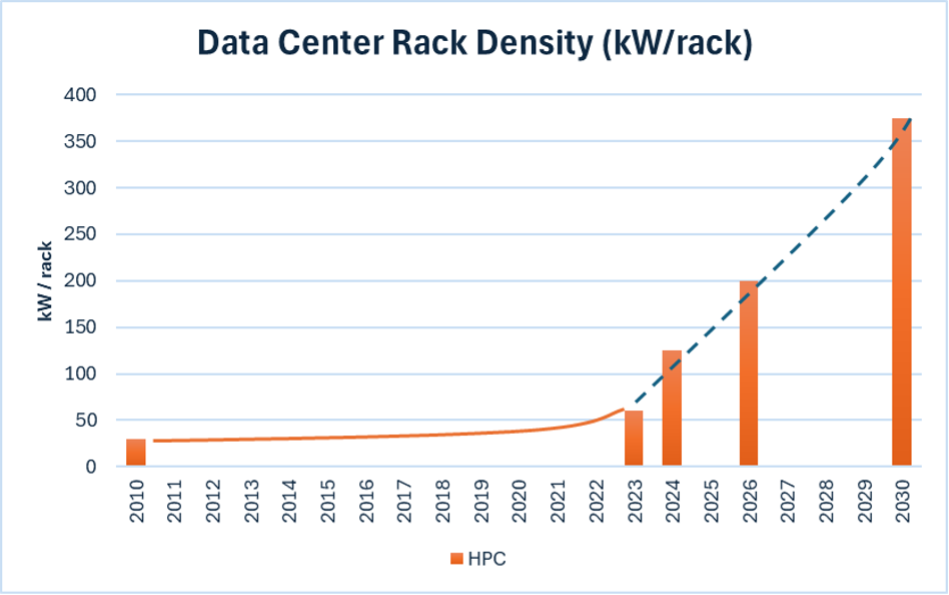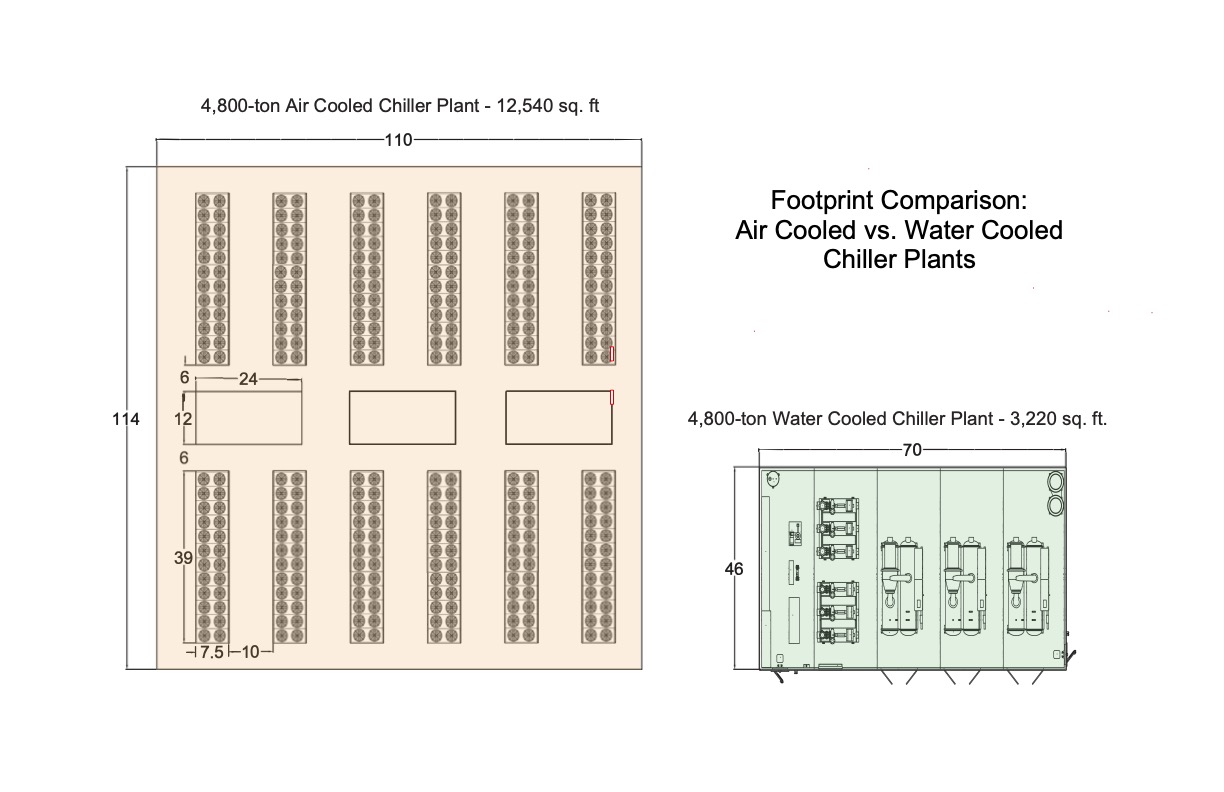 The growth (both historical and forecasted) in the density of data center cooling requirements is staggering. This growth has been driven by increasing demand for computing capacity and speed; the more computing power output, the more electrical power input is required – and associated cooling. As a result, the implications for how these data centers are cooled will be significant.
The growth (both historical and forecasted) in the density of data center cooling requirements is staggering. This growth has been driven by increasing demand for computing capacity and speed; the more computing power output, the more electrical power input is required – and associated cooling. As a result, the implications for how these data centers are cooled will be significant.
The term High-Performance Computing, or HPC, refers to the computing infrastructure required for applications such as research labs, entertainment and media, financial services, and, more recently, Artificial Intelligence (AI) and machine learning.
To illustrate this growth in HPC density, consider this. In 2010, the typical HPC data center utilized computing architecture with power densities of 3 – 5 kW/rack. By 2023, that figure had grown to 10 – 15 kW/rack. That’s a 3X increase – significant by any measure.
But that growth pales in comparison to what we’re seeing as we look forward. In response to projected computing needs, project teams are currently designing data center infrastructure to support 100 – 150 kW/rack. Those same teams anticipate designing for 200 kW/rack in 1 – 2 years, and targets of 350 – 400 kW/rack are on the realistic horizon.

This means that for a given data center facility, the amount of cooling required has skyrocketed – and that growth will only accelerate as we continue to contemplate more powerful computing requirements.
What does that mean for those of us who support the cooling infrastructure plans for these facilities?
Well, a few years ago, the trend for central cooling had shifted away from water-cooled plants to air-cooled plants; they’re typically less complicated and cheaper to install (even if they’re less energy-efficient). However, one significant drawback of air-cooled plants is the footprint; they take up a lot of real estate compared to a water-cooled plant. For example, the footprint comparison of chiller plants shown here demonstrates that the air-cooled version can easily approach 4 times larger than the equivalent water-cooled plant.
 As the data center market drives towards higher-density cooling, we’re seeing a renewed demand for water-cooled plants – simply to fit the cooling plant on the site. And that’s where Off-Site Construction (OSC) comes into play.
As the data center market drives towards higher-density cooling, we’re seeing a renewed demand for water-cooled plants – simply to fit the cooling plant on the site. And that’s where Off-Site Construction (OSC) comes into play.
Project teams are finding that OSC is the most reliable and cost-effective way to deliver the sort of water-cooled chiller plants that these current data center designs demand. The cost certainty and schedule surety inherent to the OSC approach is leading project teams to engage experts like Epsilon as they plan the next generation of data centers. If you’re considering a data center project – or any other cooling-intensive project – let us know!

